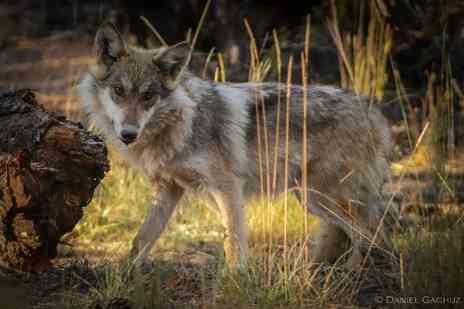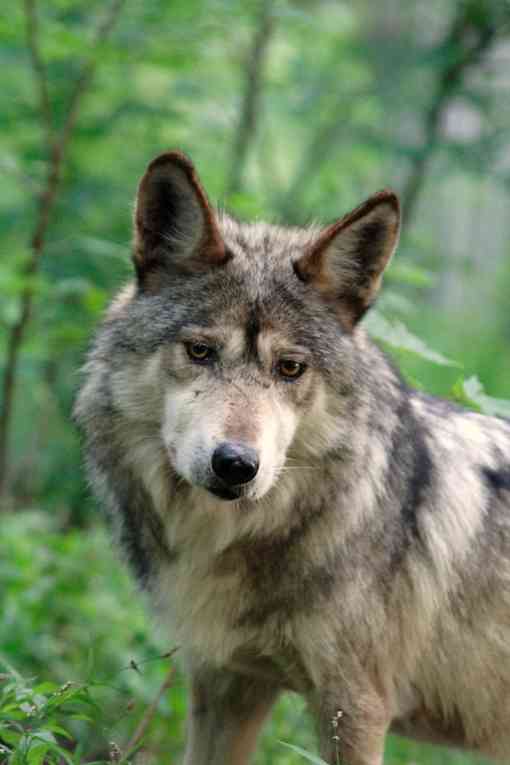The U.S. Fish and Wildlife Service (FWS) has announced its intent to revise the 10(j) rule that governs management of the endangered Mexican gray wolf and is asking for public input during the 60-day scoping period announced April 15. This is your opportunity to tell FWS—the federal agency charged with recovering the wolf—what management actions it should consider in the draft environmental impact statement that will be released later this year.
The announcement came after Defenders and our partners sued FWS and a federal court decided that the current rule, revised in 2015, is inadequate. The court found that the 2015 plan ignored science, improperly accommodated the recommendations of states or anti-wolf stakeholders and failed to further the conservation of the species, especially its genetic health. But before we get into what a new management rule must include to ensure Mexican wolves recover, it’s important to understand the extent of this rule’s authority. Passionate advocates will remember that FWS recently finalized a new recovery plan at the end of 2017, so what’s the difference between the recovery plan and this new 10(j) rule?
Recovery Plan vs. 10(j) Rule
Following the Mexican gray wolf being listed as endangered in 1976, FWS developed the first recovery plan in 1982. As all recovery plans for listed species are supposed to do, the 1982 plan laid out a high-level blueprint to answer the basic question: “What is recovery?”
At the time, FWS had just captured the last seven wolves from the wild to start a captive-breeding program, and the idea of establishing a population in the wild again seemed like a distant reality. As a result, that original recovery plan set modest goals that in retrospect never met any standard of true recovery.
In the meantime, the agency moved forward with a plan to release Mexican gray wolves back into the wild under section 10(j) of the Endangered Species Act (ESA) – an amendment to the law that allows FWS greater management flexibility for reintroduced “experimental” populations of endangered species. Basically, if recovery plans are meant to answer the question of “what is recovery,” rules under section 10(j) are designed to answer the question of “how do we get there?”
In 1996, FWS finalized a 10(j) rule that ushered the way for the first Mexican gray wolf reintroduction two years later. Since then, the wolf population has grown, and as it did and as advocates saw management practices play out, it became clear that neither the 1982 recovery plan nor the 1996 10(j) rule would lead to the wolf’s recovery.
Following years of lawsuits, FWS developed a new rule that was finalized in January 2015 – followed by the new recovery plan two years later. However, many of the inadequacies from the 1996 rule remained despite significant developments in science as well as our collective understanding of the needs of wolves.
A federal judge agreed, which is why FWS is back to the drawing board once again to develop a new 10(j) rule. But for the FWS’s new rule to comply with the judge’s order, as well as the ESA, and actually put the lobo on the path to recovery it must include these crucial elements:
Essentiality
Under section 10(j), FWS is authorized to reintroduce “experimental” populations of endangered species that are determined to be “essential” or “non-essential.” In management terms, this determines whether or not FWS can designate critical habitat for the species. Non-essential populations are not granted critical habitat, while essential populations can be, though it’s discretionary. Essential designation also requires other agencies, such as the U.S. Forest Service and Bureau of Land Management, to consult with FWS on any actions involving federal money or on federal lands. Non-discretionary consultation with FWS can result in important limitations on federal actions that might harm the Mexican gray wolf, such as livestock grazing, trapping or off-road vehicle recreation.
Since their reintroduction, wolves in the Southwest have been considered non-essential, but it is long past due for FWS to do right by the only wild population of Mexican gray wolves in the United States and deem them essential. Not only would this shift properly reflect their conservation status, but it would compel other federal agencies to take a more proactive role in their recovery. This would include ensuring that the Forest Service works with its livestock permittees to practice conflict avoidance like restricting calving to certain times of year and specific places, avoiding denning sites and increasing human presence around livestock.
Genetic Recovery
Because every Mexican gray wolf alive today – both in the wild and captivity – descends from just seven founding animals, genetic diversity has inevitably become a major factor impeding the species’ long-term recovery.
However, due to removals from the wild, illegal killings and overrepresentation of certain wolves due to breeding patterns, Mexican gray wolves’ genetic health has further declined over the past 30 years. The good news is that the captive population has retained greater genetic diversity than the wild population. But to capitalize on that diversity, FWS must release more wolves into the wild.
For nearly a decade, almost no new wolves were released into the wild, but since 2014, FWS has cross-fostered 32 pups. Cross-fostering is a technique of taking captive-born pups and placing them into wild wolf dens when the pups are less than two weeks old. The genetically valuable captive pups will be raised by wild wolves with experience in the wild.
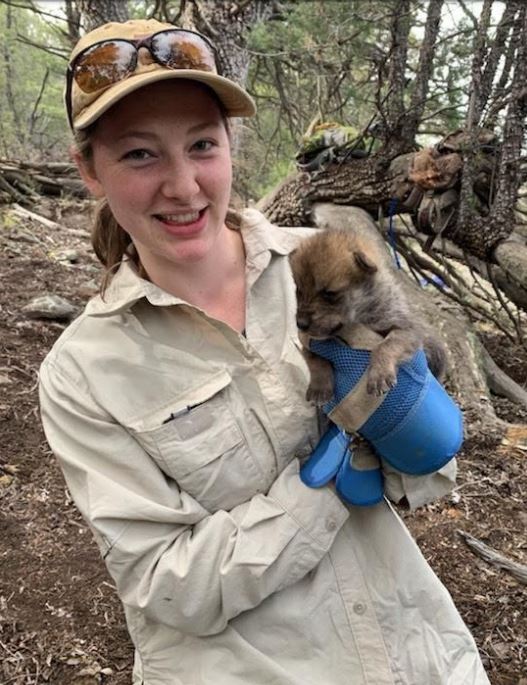
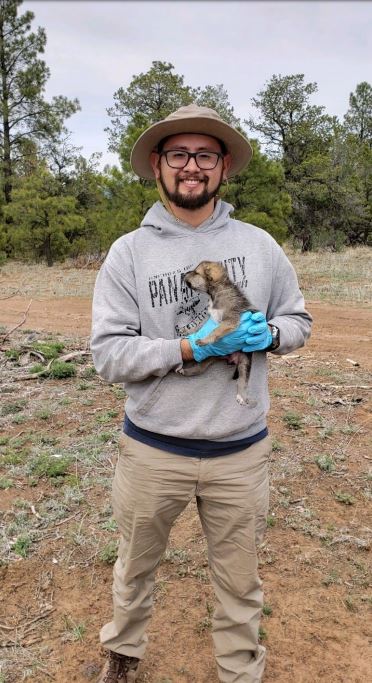
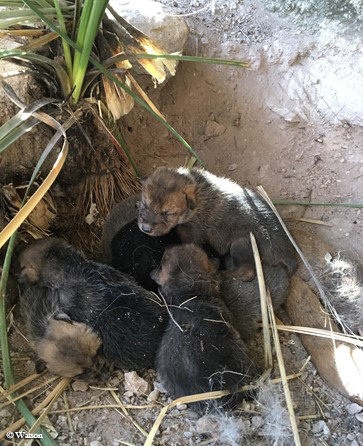
Cross-fostering has been largely successful, but it takes at least two years for those wolves to reach breeding age and even then, there are no guarantees that captive-born wolves will have an opportunity to breed and contribute their unique genetic material to the wild population. So, while cross-fostering is an important tool, it cannot be our only tool.
The new 10(j) rule must allow for the release of well-bonded family groups from captivity into the wild. Upon release, well-bonded adults with pups are the most likely to remain together as pack and hunt wild prey like elk and deer. This minimizes the chance of depredations on livestock while maximizing the opportunity that their valuable genetic material will be inserted into the wild population.
While true genetic rescue will remain an uphill battle, this strategy is our only opportunity at realizing timely success.
New populations north of I-40
Since the program’s inception, Mexican gray wolves have been restricted to areas south of Interstate 40, which cuts across New Mexico and Arizona. This bizarre policy makes Mexican gray wolves the only endangered species that is explicitly banned from migrating into new habitat, and it bars these wolves from habitat that scientists deem suitable. This includes the north rim of the Grand Canyon and the southern Rockies of northern New Mexico and southern Colorado.
But it’s a long way from the park lands of southwest New Mexico and southeast Arizona to the forests of the southern Rockies and northern Arizona. While allowing wolves to wander freely is a good first step, the new 10(j) rule must also include proactive steps to establish new populations in those regions by introducing the well-bonded family groups as discussed above. Under this vision, the “how” of recovery will mean three subpopulations, at least 200 wolves in each subpopulation for a total of 750.
This would this allow genetically distinct animals an opportunity to live in the wild and, by establishing geographically distinct populations that could be connected by occasionally dispersing individuals, Mexican wolves would be afforded more long-term stability and protection against random events like a disease outbreak that could harm a single, geographically isolated population.
Speak Up!
Mexican gray wolf recovery has been a long and complicated road that has only been made more challenging thanks to difficult to understand and seemingly duplicative planning and management processes. But as Defenders of Wildlife, in addition to fighting for the strongest protections possible for our wildlife, our job includes making sure our members and the public have the knowledge and tools to be the best advocates possible.
This is one of those moments where we need you to raise your voice for those that cannot speak for themselves. Mexican gray wolves remain the most endangered subspecies of gray wolf in the world, but the path to recovery is within reach. The science is clear, but for the U.S. Fish and Wildlife Service to do the right thing, they need to hear from you!
Now is your opportunity to tell them: Mexican gray wolves are essential! Well-bonded family groups must be released into the wild! New populations of wolves must be established in all identified suitable habitat! With your help, we can make this a turning point.
Author
comments
Wildlife & Wild Places


